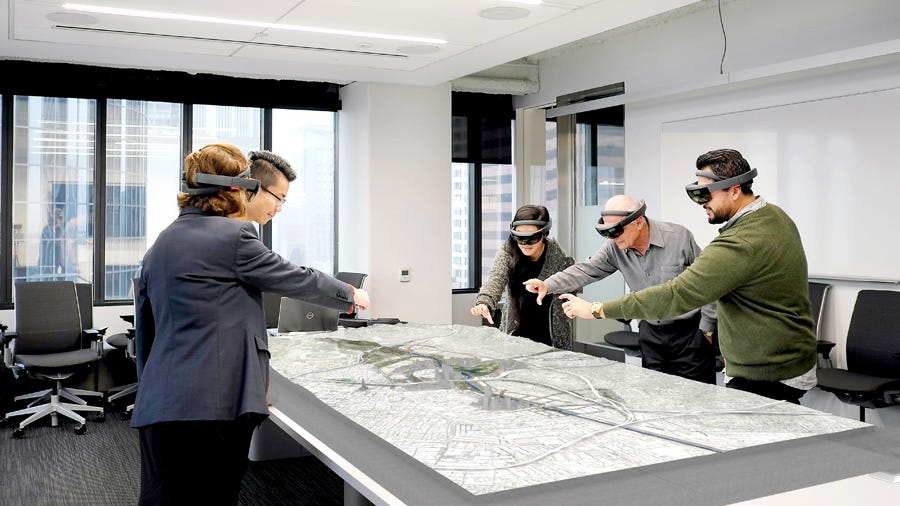Learning and Growing in Architecture: Now vs. Then
The journey from architecture student to seasoned professional has evolved dramatically over the decades.
This Week’s Top Highlights: Revitalizing Spaces
🏚️ Abandoned Buildings Provide the Potential for a Regenerative Future: The experimentation of their repair, reuse, and transformation. Read more.
🚰 Designing Public Spaces to Improve Water Management: Water Park in Mexico. Read more.
🌿 10 Interventions for Transforming Unused Areas: Revitalizing Urban Spaces. Read more.
Read Time: 3 Minutes
Today, we find ourselves in an era where technology and global connectivity have reshaped the landscape, offering an unparalleled depth of understanding and exposure. Let’s take a stroll down memory lane to compare how learning and gaining experience in architecture differ between now and the golden days of the 60s and 70s.
The Good Ol’ Days: 60s and 70s
Back in the 60s and 70s, becoming an architect was a path filled with hands-on experiences, apprenticeships, and a hefty dose of manual drafting. Fresh graduates would spend countless hours hunched over drafting tables, perfecting their technical drawing skills with T-squares and compasses. Learning was primarily through observation and practice, often under the mentorship of seasoned architects who imparted their wisdom through real-world projects.
The pace was slower, the tools more rudimentary. Blueprints were meticulously hand-drawn, and any revisions meant starting over. Architectural knowledge was passed down in a somewhat insular manner, heavily reliant on one’s immediate professional circle and the physical libraries available.
The Digital Age: Now
Fast forward to today, and the scene is almost unrecognizable. The advent of computer-aided design (CAD) and Building Information Modeling (BIM) has revolutionized the way we design, plan, and construct buildings. Fresh graduates now enter the field with a suite of digital tools at their disposal, allowing them to create, visualize, and modify designs with unprecedented ease and precision.
Learning today is more dynamic and accessible. Online platforms, webinars, and virtual reality (VR) offer immersive learning experiences that were inconceivable in the past. A wealth of knowledge is just a click away, with digital libraries, forums, and global networks enabling a broader exchange of ideas and innovations.
Holistic Understanding: Then vs. Now
In the 60s and 70s, architectural education was often compartmentalized. Technical skills were honed separately from theoretical knowledge, and the integration of various disciplines into a cohesive whole was a slower process. The holistic understanding of architecture, encompassing design, engineering, sustainability, and urban planning, evolved over many years of practice and experience.
Today, technology bridges these gaps from the get-go. BIM, for example, integrates various aspects of a building’s lifecycle into a single cohesive model. This fosters a more holistic understanding of architecture right from the early stages of a career. Sustainability, structural engineering, and aesthetic design are no longer separate entities but are interwoven through the use of advanced software that models real-world performance and impacts.
Global Exposure and Collaboration
One of the most significant shifts is the level of exposure and collaboration possible today. In the 60s and 70s, an architect’s exposure was largely limited to local or national contexts. International collaboration was rare and often hindered by logistical challenges.
Today’s architects, however, are global citizens. With tools like cloud computing and collaborative platforms, projects can be managed and executed across continents in real-time. This global perspective enriches the learning process, as architects are exposed to diverse styles, techniques, and cultural influences from around the world.
Career Progression: Then vs. Now
Junior Architect/Designer
In the 60s and 70s, a junior architect’s role was heavily focused on manual drafting, learning through observation, and hands-on experience under the close supervision of senior architects. It could take 5-7 years for a junior architect to gain enough experience to be considered for an intermediate position. This period involved mastering technical drawing skills, understanding construction methods, and learning the practicalities of project management through real-world projects.
Today, a junior architect starts with a strong foundation in digital tools like CAD and BIM, and often participates in collaborative projects from the outset. The learning curve is accelerated by access to online resources, tutorials, and virtual design environments. On average, it might take around 3-5 years for a junior architect to move to an intermediate role, as the integration of technology and real-time feedback accelerates their learning and experience.
Intermediate Architect
Moving from a junior to an intermediate architect in the 60s and 70s involved more responsibility, including design development and coordination with consultants. This stage typically spanned another 5-8 years, during which the architect would deepen their understanding of the design process, client relations, and the nuances of project execution.
Today’s intermediate architects often manage substantial portions of projects, leveraging BIM for integrated project delivery and coordination. The transition to this role is quicker, often within 3-6 years, as they benefit from continuous learning through digital platforms and advanced project management tools. Their exposure to diverse project types and global best practices through online communities and resources further enriches their experience.
Senior Architect
Reaching the senior architect level in the 60s and 70s was a culmination of decades of experience. Typically, it would take around 15-20 years to attain this status, as it required extensive knowledge, proven leadership, and a portfolio of successful projects. Senior architects were the primary decision-makers, responsible for conceptual design, client interactions, and overall project supervision.
Today, senior architects can reach this level in approximately 10-15 years, thanks to the accelerated pace of learning and the comprehensive tools available. They are expected to be proficient in the latest technologies, sustainable design practices, and global architectural trends. Senior architects today not only lead projects but also mentor younger architects, ensuring a continuous flow of knowledge and expertise.
The journey of an architect has always been one of continuous learning and adaptation. While the fundamentals of design and creativity remain timeless, the tools and opportunities available today make for a vastly different experience. The digital age has not only accelerated the pace of learning but has also democratized access to knowledge, enabling a more comprehensive and holistic understanding of architecture. As we continue to embrace these advancements, the future of architecture looks brighter and more interconnected than ever.








